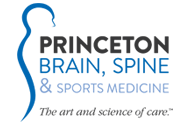Stenosis
Lumbar & Cervical Stenosis
Causes, Treatment & Pain Management
Stenosis, occurring most commonly in the cervical (upper) and lumbar (lower) spine, is a narrowing of the spinal canal. This narrowing compresses the spinal cord and nerves, leading to varying levels of pain and neurological symptoms. Although extremely rare, severe stenosis can cause significant loss of function or even paraplegia.
Some patients are born with spinal narrowing, but most develop it after age 50 due to wear and tear. Other conditions that cause spine narrowing include:
- Calcification (thickening/hardening of spine ligaments)
- Formation of osteophytes (bony growths)
- Bulging or herniated discs
- Degenerative spondylolisthesis (slipped vertebral body)
- Trauma (accident or fall)
Surgical Treatment for Lumbar & Cervical Stenosis
- Decompressive laminectomy. This is the most common surgery for spinal stenosis. The procedure removes the laminae (roof) of the vertebrae to create more space for nerves in the spinal canal. If only a portion of the laminae are removed, the procedure is called a laminotomy.
- Posterior laminoplasty. A technique used to help retain spinal stability while expanding the spinal canal.
- Discectomy. Removal of herniated or bulging discs to increase space in the spinal canal. Sometimes the foramen (area where nerve roots exit the spinal canal) also needs to be enlarged. This is called a foraminotomy.
A spinal fusion may be performed in addition to decompression surgery when patients have significant spinal instability or require surgical repair on more than one level. Traditionally, fusions involve taking a small piece of bone from the hip and grafting it into the spine. When possible, we now use bone substitutes like bone morphogenetic proteins (BMPs) to facilitate spine fusion. Spinal instrumentation like screws and rods support and stabilize the spine while the fusion heals. Our practice performs many fusions using minimally invasive surgery, which reduces blood loss and soft-tissue trauma and leads to a more rapid recovery.
Recovery From Stenosis Surgery
Most patients begin getting out of bed the same day surgery is performed, and are typically able to go home within a few days or less. Post-operative pain is managed with pain medications and anti-inflammatories. We take pain management seriously, since your comfort is key to the healing process.
After arriving home, you will be directed to gradually increase activity. Pain should begin to subside within one to two weeks, and your surgeon will provide detailed instructions about activity levels and your return to work, driving, sports and exercise.
Trust Our NJ & PA Spine Stenosis Specialists
At Princeton Brain, Spine & Sports Medicine, our award-winning neurosurgeons have a successful track record of providing leading non-surgical and surgical intervention for stenosis. If you have a history of cervical or lumbar stenosis or you believe spinal narrowing may be to blame for your back pain and neurological symptoms, call 609.921.9001 in New Jersey or 215.741.3141 in Pennsylvania. Treating you like a member of the family, our specialists deliver compassionate, skilled care for all types of back pain and spine disorders.
Contact us today to schedule a first or second opinion for back pain treatment.
References:
- University of Maryland Medical Center
- Know Your Back (North American Spine Society)
Request an Appointment
Submit an appointment request on our patient portal or contact our New Jersey and Pennsylvania campuses to speak with a patient advocate.
